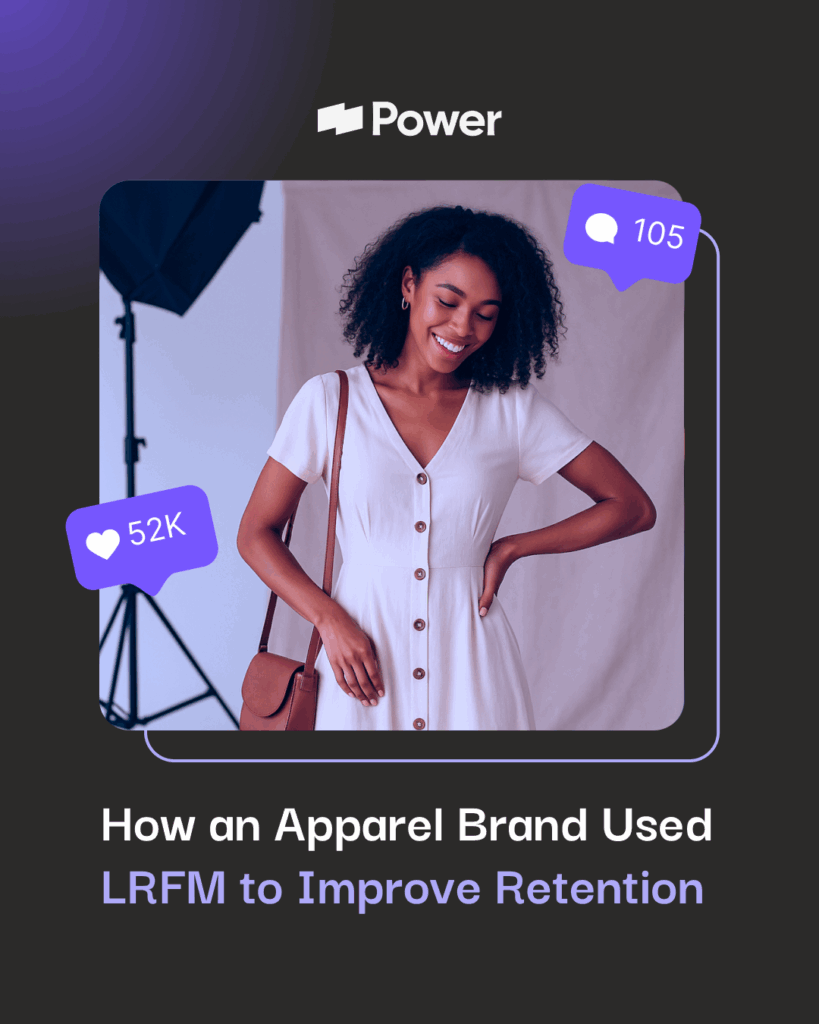7 SEO Mistakes to Avoid

- 1. #1 Operating Blindly Without an SEO Gameplan
- 2. #2 Not Understanding Your Audience or Considering Their Search Intent
- 3. #3 Ignoring Analytics
- 4. #4 Not Focusing on Mobile
- 5. #5 Sub-par Content
- 6. #6 Failing to Include Essential SEO Elements
- 7. #7 Incorporating Optimized Anchors
- 8. Avoiding SEO Mistakes
Search engine optimization (SEO) is a constant, ongoing process. Market conditions change, customer priorities shift, and even the algorithm evolves over time.
As a result, SEO best practices have to evolve, too.
If you want to reach and then stay on top of search rankings—whether it be for Google, Amazon, or another search engine altogether—this is why SEO is important. You have to stay up to date with the best and worst of SEO marketing: implement the most effective SEO methods and avoid the biggest SEO mistakes.
Let’s dive into seven of the most common SEO mistakes, as well as ways to avoid these digital faux-pas as much as possible in your SEO strategy.
#1 Operating Blindly Without an SEO Gameplan
When you set out on a road trip, you don’t usually leave home without a map—or, in the current age, a GPS-enabled smartphone app. The same holds true for figurative, rather than literal, journeys; for example, setting out to optimize your web content and climb the search engine rankings.
Do you want to get more conversions? Rank higher on Google’s home page? Increase your sales? It’s very difficult for your company to hit these lofty goals if you don’t have a strategy to reach them. Incredibly, 70% of small businesses didn’t have an SEO strategy prepared in 2020.1
If that sounds all too familiar, this is an opportunity for you to shift gears and create a competitive advantage to avoid this common seo mistake. If you instill a pointed SEO plan—one that’s embraced from the top down—you’ll actually arrive at your intended destination (rather than a random rest stop hundreds of miles away).
The Solution
A successful road trip usually involves a packing list. Take inventory by gauging your competitors and their metrics, including:
- Rankings
- Content
- Keywords
- Performance
Studying other companies’ strategies can help you better approach your own by targeting overlapping customer bases, keywords, and types of content in your own (more effective) way. You can also find automated technologies that improve workflows and drive seo performance or optimization.
#2 Not Understanding Your Audience or Considering Their Search Intent
SEO’s underlying goal is to help the search algorithm connect the user to the most relevant, accurate, and up-to-date information, regardless of their query. Put simply, Google’s rankings favor websites that meet the user’s search intent.
When it comes to SEO, far too many companies fail to understand their audience.
Your SEO efforts should be geared towards funneling your target audience down the specific channel you want them to go. Content should be positioned to satisfy their search, whether they’re in the market to buy, sell, schedule, invest, or simply learn something.
The Solution
Although you may see your product or service in a certain light, it’s more important to know how a visitor would search for or refer to them. For instance, users and search engines prefer a long-tail keyword (longer and more specific) and yet, businesses still underutilize or ignore them completely.
To address this, consider taking advantage of Google keyword planning tools. Look at your historical and real-time data to understand your market and consumers therein. Apply these insights about consumer intent to your keyword strategy.
#3 Ignoring Analytics
SEO isn’t simply about driving organic traffic. It’s also about converting that traffic into sales.
Far too often, businesses hyperfocus on high-traffic keywords when there are low-traffic keywords that might have better conversion rates due to their specificity. But you won’t know how effective your SEO and content marketing efforts are unless you track and analyze the numbers.
Making decisions without consulting the numbers is not unlike operating without an SEO strategy. You have no way of knowing what is or isn’t working or how best to use your resources. Some people wrongly estimate how long does SEO take and assume that SEO is a set-and-forget type of process when in reality, it requires constant tweaking and continual SEO optimization.
The Solution
Tracking and regularly reviewing your analytics is the best way you can optimize your site along with ranking factors. There are a variety of automated tools and seo tactics available (both free and paid for), including:
- Google Analytics and Google Search Console to gauge your site’s performance
- Platforms and tools that can handle competitive analysis, SEO management and workflows, keyword research, and link management and measurement
These digital software-as-a-service tools can increase your SEO performance and efficiency. That said, your time and money might be better spent enlisting the services of a digital media agency. These SEO experts have the knowledge, skills, and tool kits to build and then drive your SEO campaign for you.
#4 Not Focusing on Mobile
Worldwide, mobile search accounts for just over 50% of all web traffic.2 Over the past decade, Google has placed a much greater emphasis on websites that are mobile-friendly. Despite this, far too many businesses rely on an outdated web design that has not been optimized to support a mobile experience.
Some of the biggest SEO mistakes businesses make on mobile include:
- A non-responsive web design
- Slow website speeds
- Slow loading times for videos and pictures
- Incorrect or missing local information
- A difficult navigation system
The Solution
As Google continues to move toward a mobile-first search index, it would be wise to follow their lead. Neglecting more than half of your daily potential customers will only jeopardize your ability to rank highly and expand your reach.
A website redesign—one that utilizes a responsive cross-platform design—is a worthwhile investment. Done right, it will immensely improve the user experience. Not only does this create a happier customer base, but it also means users will spend more time browsing your site. These prolonged interactions will increase your SEO ranking over time.
#5 Sub-par Content
Yes, Google search results are controlled by a complex computerized algorithm, but the search engine monolith can be surprisingly judgmental when it comes to the content you’re putting out. Google’s algorithm is interested in providing high-quality content only—your users want the same.
Relevant keywords are important, but not at the expense of a poorly constructed, low-quality website. Far too many companies make glaring SEO mistakes when it comes to their content, including:
- Creating useless content with heavy keyword stuffing rather than valuable information
- Plagiarizing other websites’ content
- Trying to optimize for too many keywords in a single article
- Building content that is inaccurate or untrustworthy
- Scarcely posting, or following an inconsistent posting schedule
The Solution
Blog content is a great way to drive SEO value, but its fundamental purpose is still to provide readers with valuable information. Your articles and web pages should champion your authority and trustworthiness, including potential customer solutions.
To that end, strong SEO efforts is a byproduct of good content (not the other way around).
Here are a few ways to ensure your keywords are surrounded by top-notch content, rather than fluff and inaccuracies:
- Work on your content strategy and SEO strategy in tandem
- Brainstorm hyper-relevant pillar topics then variate around these main themes to create content clusters that cover a wide variety of topics
- Outsource your copywriting to professionals who aren’t just SEO content machines, but can produce high-quality writing
#6 Failing to Include Essential SEO Elements
Your written content, chock full of relevant keywords, is the face of SEO—it’s what your customers see and interact with, and is an important piece of the puzzle.
But behind every successful blog post is powerful backend SEO optimization.
The Solution
Equip each user-accessible post or web page with fully fleshed-out backend features that the algorithm will read and prioritize, including:
- Title tags for every page
- Meta descriptions that are informative without being overly wordy
- Intentional use of keywords in titles and descriptions
- Alt text on embedded images
- Algorithm-friendly URL structuring
These seemingly small details make a major impact on the search engine algorithms. They help the program better understand the content and its context. For instance, search bots can’t view the actual images, but they can “read” the alt text you attach to a picture, which helps them appropriately index your page.
This finesse is what often separates great from good in the world of SEO.
#7 Incorporating Optimized Anchors
In the past, optimized anchors were one of the easiest ways to improve SEO results. These anchor links were embedded into keywords that companies were hoping to rank for. You’ve almost certainly seen this technique used before, even if the concept doesn’t immediately sound familiar. Here’s an example according to Google:3
“There are many wedding rings on the market. If you want to have a wedding, you will have to pick the best ring. You will also need to buy flowers and a wedding dress.”
Wedding rings, wedding, best ring, buy flowers, and wedding dress are all relevant keywords for a bridal shop or wedding planner. In theory, these links would lead to internal pages and increase the SEO rating. But Google caught on to this somewhat underhanded technique.
Now, they’ve banned the practice of link scheming, which includes any URLs that are intended to manipulate page ranking rather than provide useful links.
The Solution
There are safe anchors you can use, including naked URLs, branded URLs, and long phrases. Focus on link quality over link quantity to use these tastefully without algorithmic penalization.
Avoiding SEO Mistakes
In all likelihood, you’ve already made at least one of these SEO mistakes. And these are just a few of the major SEO issues companies struggle with, especially small businesses. But here’s the good news: no matter how many errors you’ve made, you can always course-correct to put your website back on Google’s good side.
Whether you’re just starting out or hoping to right a few SEO wrongs, the path to search engine success starts with the creation of a data-driven SEO strategy and a dedicated team. If you’re looking for an SEO agency to help you refine your strategy and avoid costly mistakes, expert guidance can make all the difference.
Sources:
- Search Engine Journal. The 10 Most Common SEO Mistakes to Avoid. https://www.searchenginejournal.com/10-common-seo-mistakes/178734/#close
- Statista. Percentage of mobile device website traffic worldwide from 1st quarter 2015 to 3rd quarter 2020. https://www.statista.com/statistics/277125/share-of-website-traffic-coming-from-mobile-devices/
- Google Search Central. Create good titles and snippets in Search Results. https://developers.google.com/search/docs/advanced/appearance/good-titles-snippets?visit_id=636880082951453933-4272044119&rd=2
- Goolge Search Central. Link Schemes. https://developers.google.com/search/docs/advanced/guidelines/link-schemes?hl=en&visit_id=637491883999349897-3802708151&rd=1
Our Editorial Standards
Reviewed for Accuracy
Every piece is fact-checked for precision.
Up-to-Date Research
We reflect the latest trends and insights.
Credible References
Backed by trusted industry sources.
Actionable & Insight-Driven
Strategic takeaways for real results.




